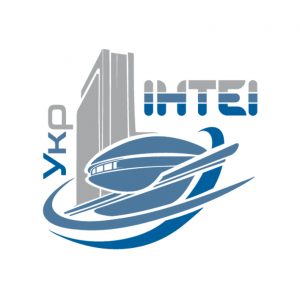http://doi.org/10.35668/2520-6524-2022-1-09
Pivovarov O. A. — D. Sc. in Engineering, Professor. Professor of the Department of Agricultural Products Processing and Storage Technologies, Dnipro State Agrarian and Economic University, Serhiy Yefremov Str., 25, Dnipro, 49000; +38 (097) 342-46-60; apivo@ua.fm; ORCID: 0000-0003-0520-171X
Mykolenko S. Y. — PhD in Engineering, Associate Professor, Associate Professor of the Department of Agricultural Products Processing and Storage Technologies, Dnipro State Agrarian and Economic University, Serhiy Yefremov Str., 25, Dnipro, 49000; +38 (098) 964-26-84; mykolenko.s.yu@dsau.dp.ua; ORCID: 0000-0002-1959-1141
Hez Y. V. — Lecturer of Department of Agricultural Products Storage and Processing Technologies, Dnipro State Agrarian and Economic University, Serhiy Yefremov Str., 25, Dnipro, 49000; +38 (050) 922-65-05; yanavasilevna11@gmail.com; ORCID: 0000-0003-2173-7338
ANALYSIS OF LOSSES OF FOOD RAW MATERIALS IN THE FOOD CHAIN
Abstract. The article considers aspects of food security in view of the loss of food raw materials in the food chain at different stages of production. Loss of food raw materials occurs at all stages of the food chain. Thus, there is an increase in losses of food raw materials, the amount of which exceeds 1,3 billion tons annually. In general, there are two categories of food losses. The first category is formed during the stages of collection, transportation, maturation and processing of food raw materials, while the second category arises through the fault of the final consumer. The amount of food loss is also affected by the industrial development of the planet. In general, industrialized countries are characterized by a much higher percentage of food losses. In turn, more than 80 % of the loss of food raw materials can be avoided through the introduction of innovative storage technologies, and the use of resource-saving technologies will be promising. No less important aspect to reduce the loss of raw materials at the stage of consumption is the rationalization of food culture and consumer awareness.
Keywords: food industry, food products, food chain, losses of food raw materials, food security, resource conservation.
REFERENCES
- Hodges, R. J., Buzby, , & Bennett, В. (2011). Postharvest losses and waste in developed and less developed countries: opportunities to improve resource use. The Journal of Agricultural Science. 149. Р. 37-45. https://doi.org/10.1017/S0021859610000936
- Global food losses and food waste – Extent, causes and prevention. Rome. FAO 2011. 2011. Р.
- Alexander, Р., Brown, С., Arneth, А., Finnigan, J., Moran, D., & Rounsevell, D. A. (2017). Losses, inefficiencies and waste in the global food system. Agricultural Systems. 153. Р. 190-200. https://doi.org/10.1016/j.agsy.2017.01.014
- Food loss and waste facts. Retrieved from: http://www.fao.org/resources/infographics/infographics-details/ru/c/317265/.
- Xue,, Orcid, G. L., Parfitt, J., Liu, Х, Van Herpen, Е., Stenmarck, А., O’Connor, С., Östergren, К., & Cheng, S. (2017). Missing food, missing data? A critical review of global food losses and food waste data. Environmental Science & Technology. 51. Р. 6618-6633. https://doi.org/10.1021/acs.est.7b00401.
- Papargyropoulou, Е., Lozano, R., Steinberger, J. , Wright, N., bin Ujang, Z. (2014). The food waste hierarchy as a framework for the management of food surplus and food waste. Journal of Cleaner Production. 76. Р. 106-115. https://doi.org/10.1016/j.jclepro.2014.04.020.
- DSTU ISO 22000:2007. (2007). Systemy upravlinnia bezpechnistiu kharchovykh produktiv. Vymohy do bud-yakykh orhanizatsii kharchovoho lantsiuha [Food safety management systems. Requirements for any food chain organizations] (ISO 22000:2005, ITD) Kyiv, 30 р. [in Ukr.].
- Shrubenkhoff, Kh., Movchan, V., & Burakovskyi, I. (2009). Polityka Ukrainy u sferi silskoho hospodarstva, bioenerhetyky ta kharchovoi promyslovosti – doslidzhennia, vysnovky, rekomendatsii [Ukraine’s policy in the field of agriculture, bioenergy and food industry – research, conclusions, recommendations]. Kyiv, 384 р. (In-t ekonomichnykh doslidzhen ta politychnykh konsultatsii). [in Ukr.].
- Skopenko, N. S. (2011). Osnovni napriamy podolannia nehatyvnykh tendentsii rozvytku APK Ukrainy. Problemy pidvyshchennia efektyvnosti infrastruktury. 29.
- Simakhina, H. O., & Naumenko, N. V. (2011). Nyzki temperatury u tekhnolohiiakh ozdorovchykh produktiv [Low temperatures in the technology of health products]. Kyiv, 363 р. [in Ukr.].
- Gustafsson, , Cederberg, С., Sonesson, U., & Emanuelsson, А. (2013). The methodology of the FAO study: Global Food Losses and Food Waste – extent, causes and prevention. FAO 2011. 857. Р. 70.
- Lipinski, B., Hanson, C., Lomax, J., Kitinoja, L., Waite, R., & Searchinger, T. (2013). Reducing food loss and waste. World Resources Institute Working Paper. Р. 1-40.
- Chursinov, Yu. O., Mykolenko, S. Yu., & Sokolov, V. Yu. (2015). Tekhnolohichni aspekty vyrobnytstva zernovykh produktiv z vysokoiu biolohichnoiu tsinnistiu. Visnyk DDAEU. 3. P. 70-45.
- Skurihina, I. M., & Volgareva, N. (1987). Himicheskij sostav pishchevyh produktov [Chemical composition of food]. Moscow. 224 р. [in Russ.].
- Mary Ann Augustin, М. А., Riley, М., Stockmann, R., Bennett, L., Kahl, А., Lockett, Т., Osmond, М., Sanguansri, Р., Stonehouse, W., Zajac, І., & Cobiac, L. (2016). Role of food processing in food and nutrition. Trends in Food Science & Technology. Р. 115-125. https://doi.org/10.1016/j.tifs.2016.08.005.
- Radkevych, L. A. (2009). Tekhnolohichni innovatsii u kharchovii promyslovosti ta problemy yikh vprovadzhennia. Ekonomika kharchovoi promyslovosti. 2. Р. 5-10.

